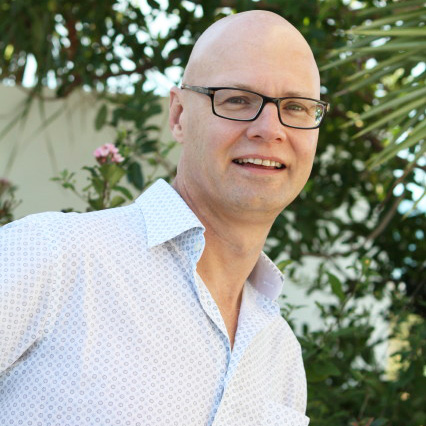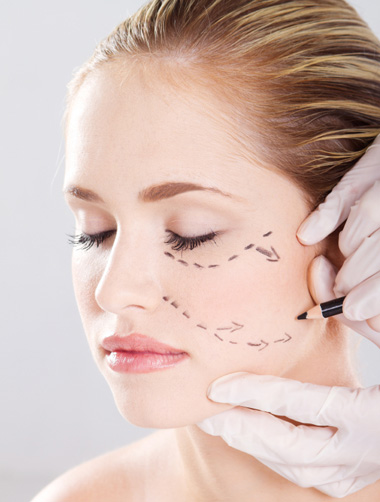WHAT IS FAT TRANSFER?
Fat transfer, also known as fat grafting, is transference of fat from one body area to another via liposuction followed by injecting it elsewhere.
This procedure is most commonly used for face and cheek enhancements, filling hollow lower eyelids, and areas that have lost volume due to aging.
Because you are injecting a small amount of your own fat from one section of your body part into another, some people consider this to be ‘natural’ plastic surgery ie using your own tissue rather than a foreign substance.
HOW IS FAT TRANSFER DIFFERENT FROM FAT REMOVAL
During fat grafting, fat is removed from parts of the body which have excess fat such as the stomach and hips.
This fat is then injected into other desirable parts of the body.
This procedure helps patients achieve volume in places they desire and make these sections of their body appear more shapely.
Areas of the body where this fat can be transferred to are buttocks, breasts or cheeks.
On the other hand, fat removal, also known as liposuction, is used to eliminate fat deposits which can not be eliminated through diet or exercise.
Fat removal helps contour parts of your body via a vacuum-like device.
The aim is to eliminate enough fat and contour the body to a desirable shape.
BENEFITS OF FAT TRANSFER
Fat transfer has become a preferred method for people to achieve body contour and volume in desired parts of their body.
Fat transfer has become a popular cosmetic treatment because it is considered to be natural, long lasting and versatile.
Moreover, clients with allergies to traditional dermal fillers can safely use this method instead to achieve their aesthetic goals.
Even though 65% of the fat transferred is reabsorbed into the body within months of the procedure about 35% will usually last for years, however results can vary for individuals. For this reason the treated area may be slightly overfilled at the time of treatment. Clients sometimes choose to undergo several fat transfer treatments over the course of a few months to obtain the desired results.
Additionally, there is little downtime associated with this procedure. If the process is performed in conjunction with other cosmetic procedures, the healing period may be lengthy. However, the healing period for a fat transfer alone is just a few days.
WHAT KINDS OF CONDITIONS RESPOND WELL TO FAT TRANSFER?
Often with ageing, individuals start losing fat from underneath the skin, causing volume loss in an area.
Fat transfer allows the individual to have a more volumised skin.
Fat transfer is helpful for reconstruction purposes, cosmetic purposes and certain types of scars and deformities.
What are the risks of FAT TRANSFER ?
Fat transfer is generally considered to be a short down time procedure when performed by a specialist cosmetic dermatologist because the patient’s fat is being used and transferred from one body part to another.
Therefore, there is virtually no risk involved for allergies or rejection of fat tissues by the body as one can’t be allergic to their own fat.
This procedure is excellent for individuals allergic to other filler substances.
There is a very small risk of fat embolisation occurring if fat grafting is performed in between the eyebrows so the procedure is not recommended in this area. Scarring, asymmetry, skin dimpling and infection may occur with a fat transfer procedure.
HOW IS FAT TRANSFER PERFORMED?
The fat transfer procedure may be performed under local or general anaesthetic depending on the extent of the procedure.
The area from which the fat needs to be removed is known as the donor site. The recipient site is the area where the fat is injected back into the body.
Both donor site and recipient site are cleansed before surgery and numbed with a local anaesthetic. A syringe with a small cannula is then used to extract the fat through a small incision in the donor site.
Once the fat is removed, it is separated from any fluid and re-injected into the recipient site. A pressure dressing is applied to the donor site after the procedure.
WHAT CAN BE EXPECTED AFTER THE FAT TRANSFER PROCEDURE?
Following the procedure, generally, the client is expected to have some temporary swelling, bruising and soreness which may last for some days.
Regular activity can resume 24 hours after the surgery. However strenuous movements should be avoided until your dermatologist approves it.
HOW LONG WILL THE IMPROVEMENT LAST?
The duration of the improvements after surgery varies from patient to patient.
On average, the results are long-lasting. However, depending on your situation, follow up injections may be needed.
This could be to help maintain the desired appearance or extend the longevity of the fat transfer. The fat that is not reabsorbed develops its own blood supply so can last for many years. Some Stem Cells are also transferred with the fat, promoting a more long lasting result which does not occur with injections of other fillers.
HOW TO PREPARE FOR THE FAT TRANSFER PROCEDURE
Prior to your surgery date, please make sure you undergo a blood test to assess your clotting profile. If your doctor has prescribed medications, please commence them as instructed.
If you are taking any other medications, you must let your doctor know immediately. Medicines that can affect the procedure include Aspirin and other non steroidal anti-inflammatory medications, or products containing Coumadin, Pradaxa, Xarelto and Vitamin E because they can cause excessive bleeding and poor healing.
Alcohol must not be consumed a week before the surgery as this can cause excess bleeding. Smoking must be stopped four weeks before the surgery.
Also, the patient should make sure someone can be at home with them 24 hours after the surgery for assistance if it is required.
 Dr Russell Hills is an experienced cosmetic dermatologist based in Brisbane, Australia and is a member of the Academy of Facial Plastic Surgery. Dr Hills also has extensive experience in MOHS surgery for skin cancer removal, and is the principal Dermatologist at Aesthetix.
Dr Russell Hills is an experienced cosmetic dermatologist based in Brisbane, Australia and is a member of the Academy of Facial Plastic Surgery. Dr Hills also has extensive experience in MOHS surgery for skin cancer removal, and is the principal Dermatologist at Aesthetix.
Dr Hills regularly lectures on cosmetic and laser surgery and skin cancer removal, and has numerous publications on these topics. He is a member of a number of Australian and American medical associations, and attends local and international conferences to stay up-to-date with the latest approaches in cosmetic medicine.

Adherence to the information on this site will not ensure successful treatment in every situation and will not ensure specific results in the individual patient. Although complications may be rare, there are certain inherent risks connected with surgical procedures that should be discussed with the dermatologist. This Website contains very general information and any procedures mentioned in it should be discussed in detail with your dermatologist at the time of consultation.